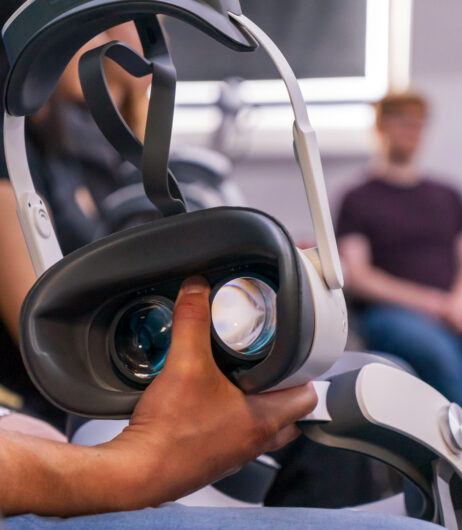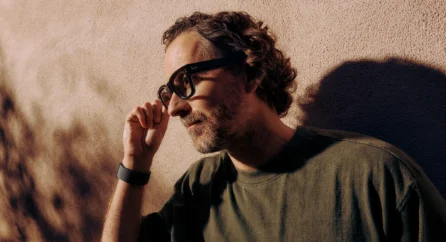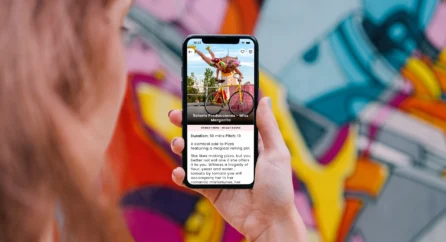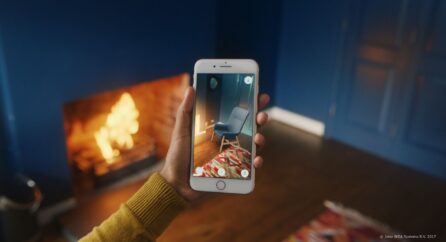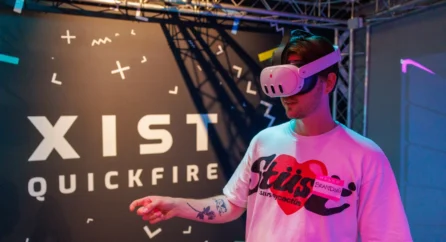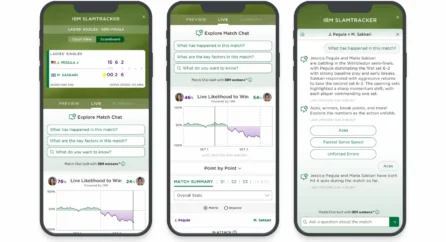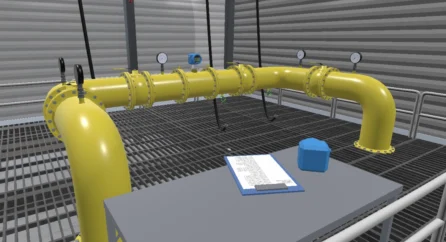Home Knowledge Base Making clients believe in worlds they can’t see yet
Making clients believe in worlds they can’t see yet
28th August 2025

The hardest thing about pitching immersive tech isn’t the tech, it’s explaining the magic without having the magic in the room. You can build a beautiful VR world that puts you floating into a space station, or an AR experience that turns a high street shop window into a live circus – but when you’re pitching it, you’re relying on early, flat images on a slide deck and a client who’s never worn a headset. It’s like selling the first drop of a rollercoaster by showing a photo of the tracks.
The theory says: “show, don’t tell.” The reality is you’re often forced to tell… a lot. You resort to showing off some amazing words, a professional deck, and an amazing case study whilst waving your hands around like a bizarre game of charades. My personal specialty is the “floating menu gesture”: one hand hovering in space, the other jabbing at invisible buttons. Sometimes the magic can come from taking small, calculated, creative risks.
Not the “ Let’s completely change the concept at the eleventh hour” kind of risk, more the subtle, playful, “Let’s show them something they didn’t ask for but can’t stop thinking about” kind of risk.

An example of some of my brilliant hand gestures… big fish, little fish, carboard box anyone?
That might mean sneaking in an unexpected Easter egg in the concept art, animating a slide while the rest are static, or physically getting up mid-call to “walk them through” the space as if they’re already there. These little surprises jolt people out of passive client mode and into curious participant mode.
We have some incredible case studies, demos, testimonials, and to show but there’s a balance. Show too much, and the magic fades. Show too little. And you get the polite nod that says “Yes, but what does it do?”
This matters because the UK immersive sector is no cottage industry. It’s a £10 billion-turnover market supporting 47,000 jobs, growing at over 11% a year. By 2030, immersive entertainment alone is projected to pull in nearly £25 billion worldwide. Clients want in – but they need to believe in it first.
I once pitched a VR training simulation to a client who was worried people wouldn’t “look the right way.” I explained visual guides, spatial audio cues, and subtle UI nudges. Still blank stares. So I acted it out – swivelling in my chair, snapping my fingers, following an imaginary path. Which worked fine… until I bashed my knee into the table. We still got the project though.
And that’s the point: immersive experiences are about how the human connects. The story. The emotion. The best ones come alive because they make you feel something in the moment – your ears, eyes, and brain work together to trigger something.
The real skill is knowing when to stop explaining and start inviting. Let the mystery breathe. Let the client lean forward. Because the moment we get the opportunity to show off our incredible team’s skills. You won’t need slides, or renders, or any more wild gesturing in the air.
They’ll put that headset on, and you’ll just say: “See?”

Jon Rogers
Jon has been working in creative and educational industries for over two decades, with experience at KLM Airlines, the UN, Swift, and Lotus Cars, where he won the coveted Princess Royal Award for a range of worldwide projects. With a strong passion for blending storytelling and technology, he loves bringing original ideas to life and working with incredibly talented people. Outside of work, he enjoys writing, both word and music, spending time with his family, and running his '90s Britpop party night, where he has DJ'd at festivals and iconic venues across the UK.
Related posts

How creative agencies can use immersive tech to drive results

by Infinite Form
13th Sep 2024

How creative agencies can use immersive tech to drive results

by Infinite Form
13th Sep 2024



